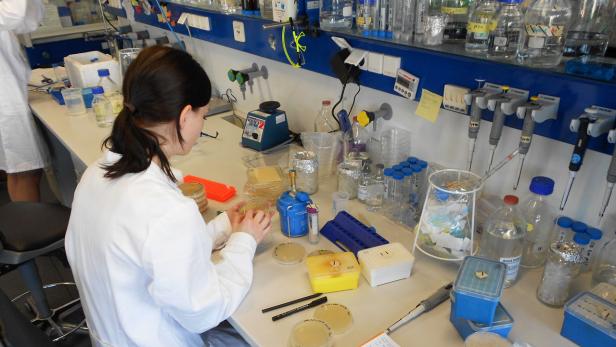
Austrian decodes hamster gene
Dieser Artikel ist älter als ein Jahr!
Hamster cells are extremely important for the manufacture of drugs because they form proteins in the same manner as human cells. The Austrian Centre of Industrial Biotechnology (ACIB) has now succeeded in decoding the genome of the Chinese hamster together with the University of Natural Resources and Applied Life Sciences (BOKU) and the University of Bielefeld (CeBiTec). “Now, we can better understand how the cells work, and adapt them better to specific requirements,” explained Nicole Borth, the head of the successful group of researchers.
Therapeutic proteins are complex structures that must be adapted perfectly to the human organism so that there are no side effects or immune system reactions. With the knowledge of the structure of the hamster cell, they can now “program” the cells exactly to produce a specific substance.
No hamster slaves
But there are no endless rooms of hamster slaves that are only kept alive to manufacture drugs. In reality, the cells whose genome has now been decoded have little to do with actual hamsters, Borth said.
The so-called CHO cells were derived from the ovary of the hamster in the 1950s. The cells proved to be ideal for drug manufacture. Since then, they have been artificially reproduced, and work for humankind in nutrient solutions and bioreactors. So no hamsters are harmed.
Arduous decoding process
With the advances in genetic sequencing technology, it was only a matter of time until someone attempted to decode the genome of the CHO cell. The first attempt was made in Singapore in 2004. But the results of this work were never published. The ACIB started a new attempt in 2010, using the newest sequencing technology available at the time. With the support of two industrial partners (Pfizer and Novartis), it was possible to start the expensive gene sequencing process.
Some 25,000 genes and gene variants were analyzed. The CHO genome was split into individual chromosomes. These chromosomes were sequenced individually, and then reassembled into the complete genome. “A supercomputer took care of the assembly of the individual sequences, and worked on this task alone for a week straight,” Borth told. The scientist estimates that the sequencing cost a million euros.
Fast, cheap and safe medicines
The research group intends to share its success with other scientists. The chogenome.org platform was established to this end. Nicole Borth described her vision: “We can manufacture active ingredients more efficiently and cheaply – at prices that any typical healthcare system, we hope including in third-world countries, can afford.” BOKU director Martin Gerzabek also hopes for “faster, cheaper and safer biopharmaceuticals manufacture.”
The hamster cells are especially used to manufacture antibodies, for example for cancer treatment. Medicines are also manufactured for treating arthritis, as are immune system stimulators. CHO cells are well suited for the production of erythropoetin, a drug for the treatment of anemia in dialysis patients.
One of the greatest successes
The hamster genome project, which has already been published in the professional journal Nature Biotechnology, is one of the greatest successes of the ACIB to date. The ACIB is a joint venture of the Graz University of Technology, BOKU, the University of Innsbruck, the University of Graz and Joanneum Research, and has multiple sites in Austria and abroad. The institution sees itself as a link between science and the business world, and is financed in part by the COMET program.
Kommentare